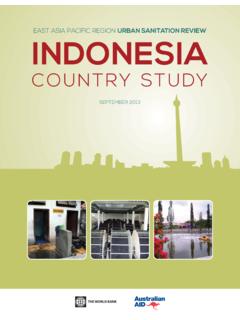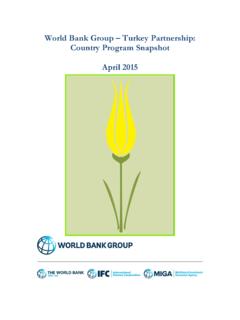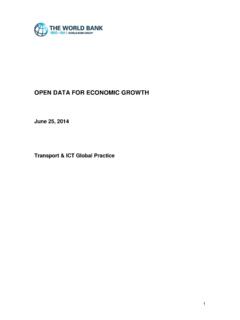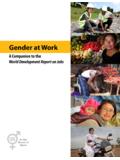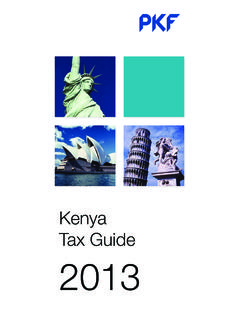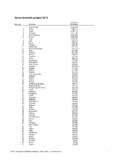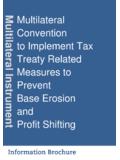Transcription of Time to shift gears - World Bank
1 time to shift gearsAccelerating growth and poverty reduction in the new KenyaTABLE OF CONTENTSABBREVIATIONS AND ACRONYMS iFOREWORD iiACKNOWLEDGEMENTS iiiMAIN MESSAGES AND KEY RECOMMENDATIONS ivEXECUTIVE SUMMARY vTHE STATE OF kenya S ECONOMY 11.
2 Economic performance A resilient economy in times of adversity 2 kenya s fiscal prudency is paying off Monetary conditions have eased but policy must keep an eye on inflation while 12 supporting growth The External Sector poses challenges and risks to kenya s growth prospects 152. Growth Outlook for 2013 -2014 Growth Prospects Risks to outlook Important priorities for the near and medium term 27 SPECIAL FOCUS: POVERTY 323.
3 Poverty Poverty in kenya How has income-poverty changed? How have broader measures of welfare changed? 41 Making public spending work for the poor What will it take to make poverty history? Poverty reduction: the way forward 54 ANNEXESA nnex 1: Macroeconomic environment 58 Annex 2: GDP Growth Rates 2008-2012 kenya SSA EAC 58 Annex 3: kenya annual GDP 59 Annex 4: Quartely growth rates (percent) 60 Annex 5: Inflation 61 Annex 6.
4 Tea production and exports 62 Annex 7: Coffee production and exports 63 Annex 8: Horticulture exports 64 Annex 9: Local electricity generation by source (Million KWh) 65 Annex 10: Soft drinks and sugar production 66 Annex 11: Tourism arrivals 67 Annex 12: New vehicle registration 68 Annex 13: Exchange rate 69 Annex 14: Interest rates 70 Annex 15: Credit to private sector 71 Annex 16: Money aggregate 72 Annex 17: Mobile payments 73 Annex 18: Nairobi stock exchange (20 share index) and the dow jones (New York) 74 Annex 19: Nominal and real exchange rate 75 Annex 20.
5 Fiscal position 76 Annex 21: 12-Months Cumulative Balance of Payments In millions of US dollars 77 Annex 22: Growth Outlook 79 Annex 23: Maize prices in kenya 80 Annex 24: Methods 82 Annex 25: Illustrations of distributional impact of inequality on the distribution of consumption 84 Annex 26. National accounts based predictions of poverty using $ dollar per day poverty line 85 Annex 27.
6 Trends in household living standard indicators between 1989 & 2009 86 LIST OF FIGURESF igure 1: kenya is lagging its peers vFigure 2: Has growth and inequality driven poverty down? viiFigure 3: Focusing on poor regions ..or poor people? viiiFigure : Growth picked up during the second half of 2012 2 Figure : kenya is lagging behind SSA 3 Figure : Growth in 2012 was broad based 4 Figure : Hydro generation rebounded in 2012 4 Figure : Growth in services declined in all sectors including tourism except public administration 4 Figure.
7 Consumption continues to be the key driver of kenya s growth offsetting net 5 export weaknessFigure : Inflationary pressures have come under control 6 Figure : Fiscal position remains strong despite deterioration of the overall balance 6 Figure : kenya s public debt declined in 2012 7 Figure : Yield curve movements in the last 9 months reflected political developments 7 Figure : Principle sources of government revenue have remained the same over the years 8 Figure : Budget Cuts absorbed by recurrent spending while development spending was increased 9 Figure : Implementation of the budget remains a major challenge 9 Figure : Per capita allocation for counties shows wide variations 10 Figure : Monetary aggregates started increasing in response to policy easing in 12 the second half of 2012 Figure.
8 Short term rates have responded to monetary policy which seems effective 12 Figure : Long term rates have remained high but are declining with monetary easing 13 Figure : Commercial banks pricing behavior of loans seems to vary across categories of borrowers 13 Figure : Commercial banks offered high deposit rates for term deposits to attract more liquidity 14 Figure : Tight monetary policy constrained credit to all sectors of the economy 14 Figure : kenya s equities are recovering strongly 15 Figure : A wider current account deficit is being financed by short term flows 16 Figure : Non-oil imports mainly capital imports increased significantly in 2012 while 17 oil imports remained flat Figure : FDI inflows into kenya remains low compared to its peers in the region while 17 Short term flows have increased significantlyFigure.
9 Short term flows has become a significant factor in the balance of payment 18 Figure : The exchange rate stabilized in 2012 but has depreciated at the rate of 1-4 percent 22 per year in nominal terms in the last 10 years against the major currenciesFigure : kenya competitiveness continues to be eroded 22 Figure : Remittances have risen sharply in the last few years 23 Figure : A pickup in growth in 2013 -14 24 Figure : Monetary policy space is available to support growth 25 Figure : A close relationship between inflation and credit to private sector 26 Figure : Savings and GNI per capita (2011) 28 Figure : Savings and investment, as at GDP (2011) 28 Figure : kenya needs to ramp up poverty monitoring 32 Figure


